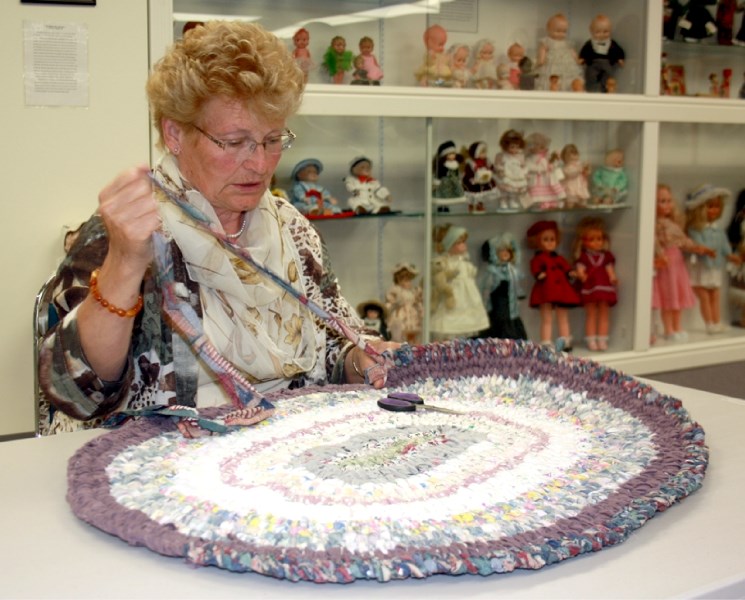Attendance numbers for last Saturday’s Pioneer Day weren’t as high as organizers had hoped, but demonstrators were nonetheless enthusiastic in showing off their skills.
The annual event at the Westlock Pioneer Museum, which is intended to pay tribute to the skills the early pioneers of the area required in their everyday lives, saw only a few dozen visitors come through the doors.
“It was lower than other years, but everybody who came seemed to enjoy it,” organizer Karen Letts said.
Despite that low attendance, artisans demonstrating some of the old-fashioned ways to do things were happy to show off their skills.
Art Avery made a batch of old-fashioned ice cream, and although he has lost the recipe his mother used to use, the one provided by Betty Seatter proved to be a suitable replacement.
The rich flavour of the old-fashioned kind of cool treat dwarfs the watered-down sugary flavour of most commercial ice cream, and there’s a simple reason.
“The ice cream you buy in the store is made with blue milk,” he said. “There’s nothing left in the milk.”
Using the full fat whipping cream makes all the difference, but Avery added that in the old days, using eggs from range-run chickens, the ice cream would have a richer yellow colour from the yolks.
In another part of the museum, Phyllis Cramer showed an impressive display of the crochet work she’s done over the years.
To make a single tablecloth — like the ones she’ given as gifts to all her grandchildren – it takes as much as 100 hours of work. While the first settlers in the Westlock area did it for necessity, crocheting is now done more as a unique handicraft.
“It’s something special and unique,” Cramer said. “You don’t go into a store and buy it; it just isn’t there to buy.”
For quilter June McMillan, the reasoning is much the same. She said while you can buy commercially made quilts for less than the hand-made variety, there’s no real replacement for a unique piece of artwork.
Her first exposure to quilting came from her grandmother, who she watched quilt from a very young age.
“Necessity was why they did it, just to have quilts,” she said. “But now it’s a real art form.”
Anna Churchill, who was demonstrating how to make rag rugs, said her motivation for her craft is also removed from those of the pioneers who came before her. Instead of necessity, she got into rug making to recycle old fabric.
She first learned the skill from a friend, and then when she was teaching school in Barrhead she mentioned to her class that she wanted scrap fabrics.
“They cleared house,” she said. “I got droves and droves.”
Although the artistic value of the rugs is not Churchill’s main motivation, the artistic value was nonetheless obvious when one looked at the colourful creations she had on display.
The low turnout could mean organizers change the format and try to do things differently next year, but Letts said that wouldn’t be decided until the museum directors meet in late August.



